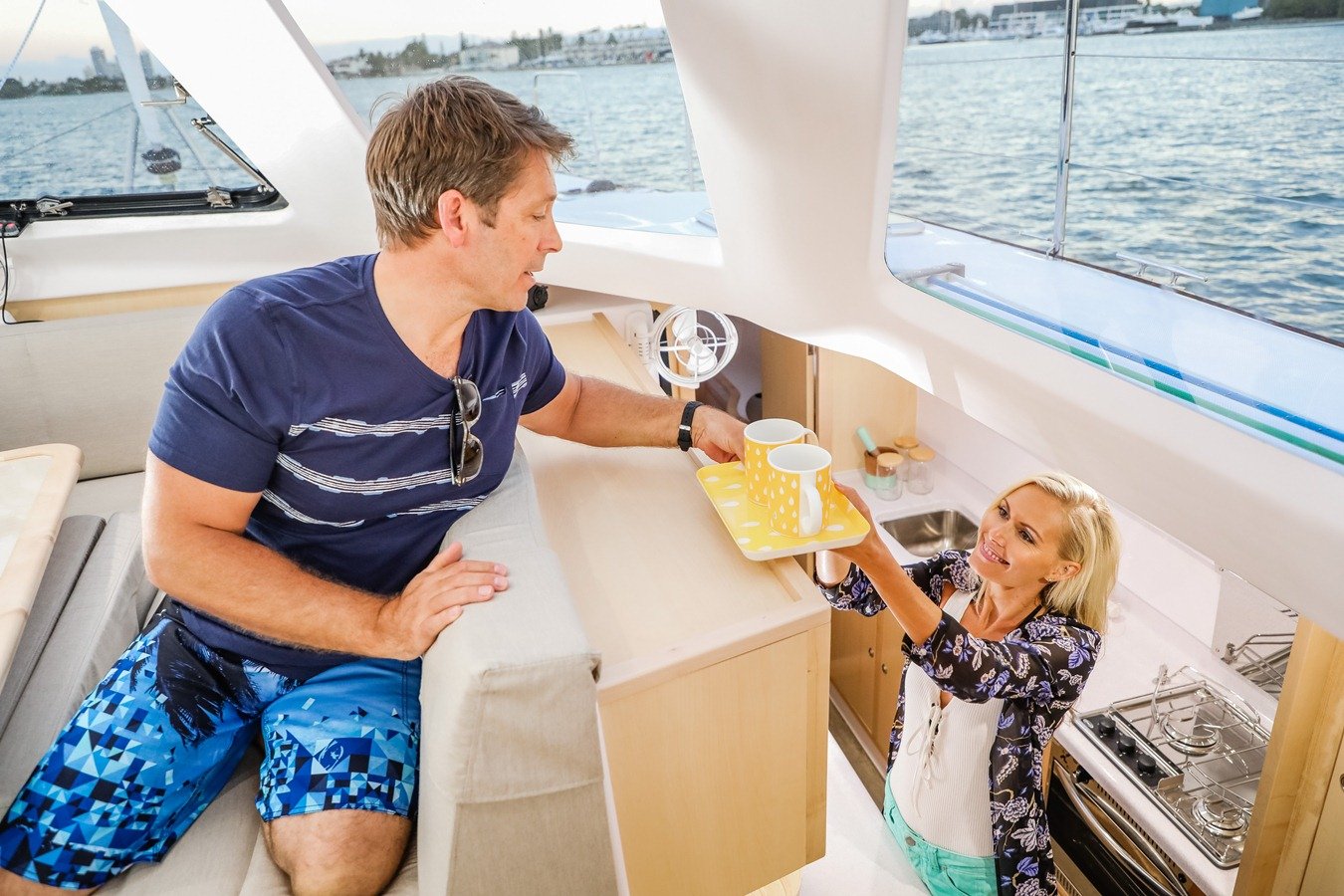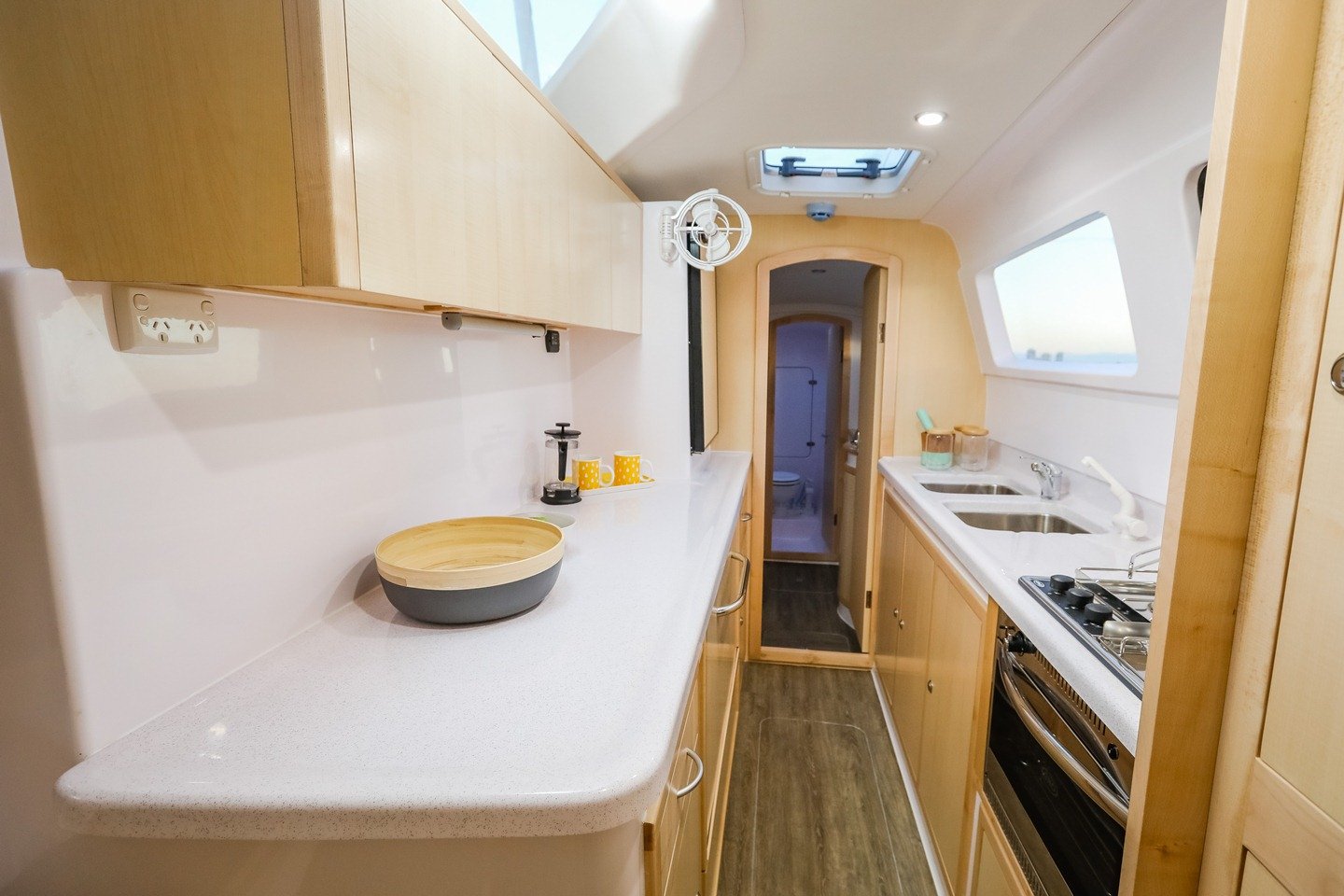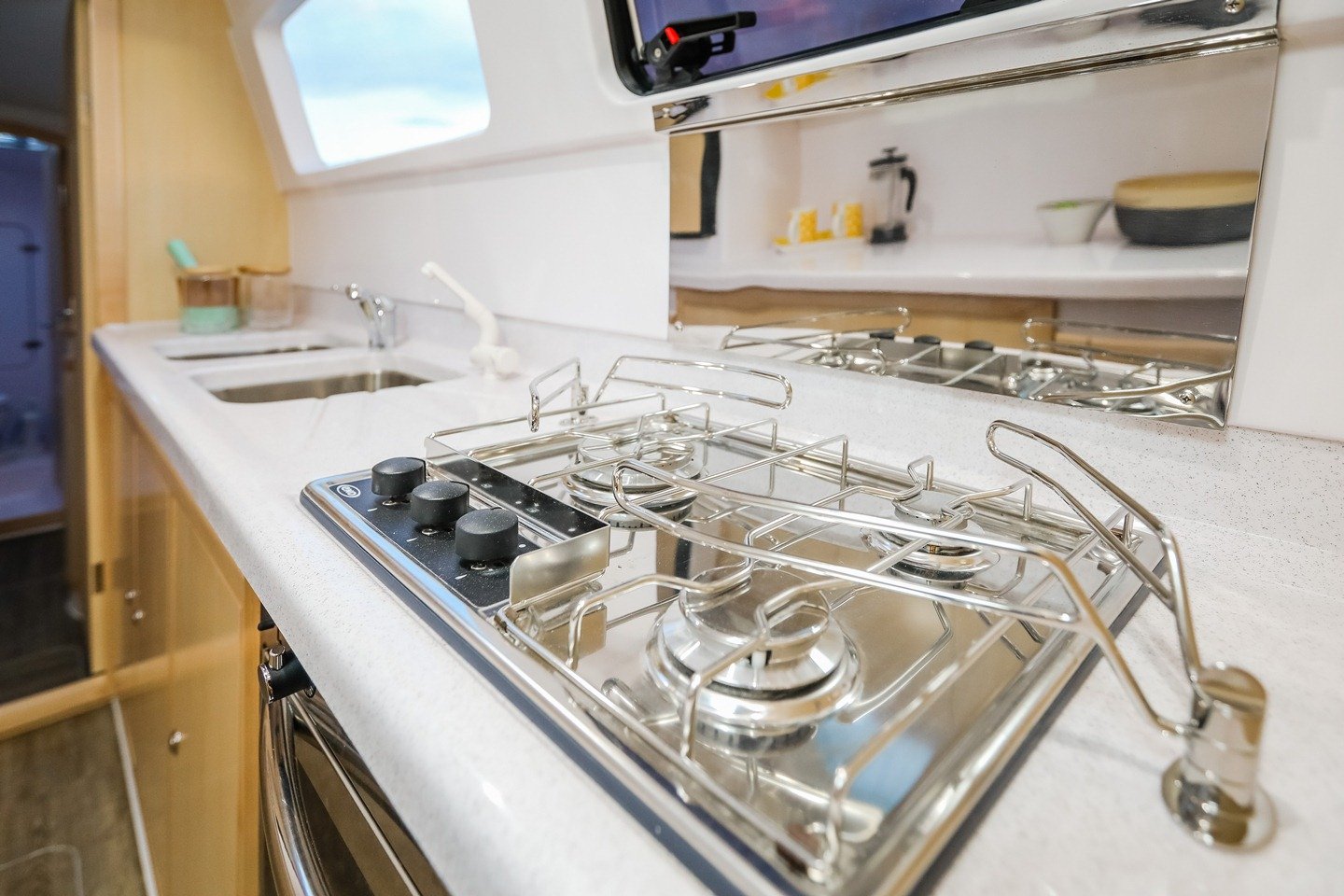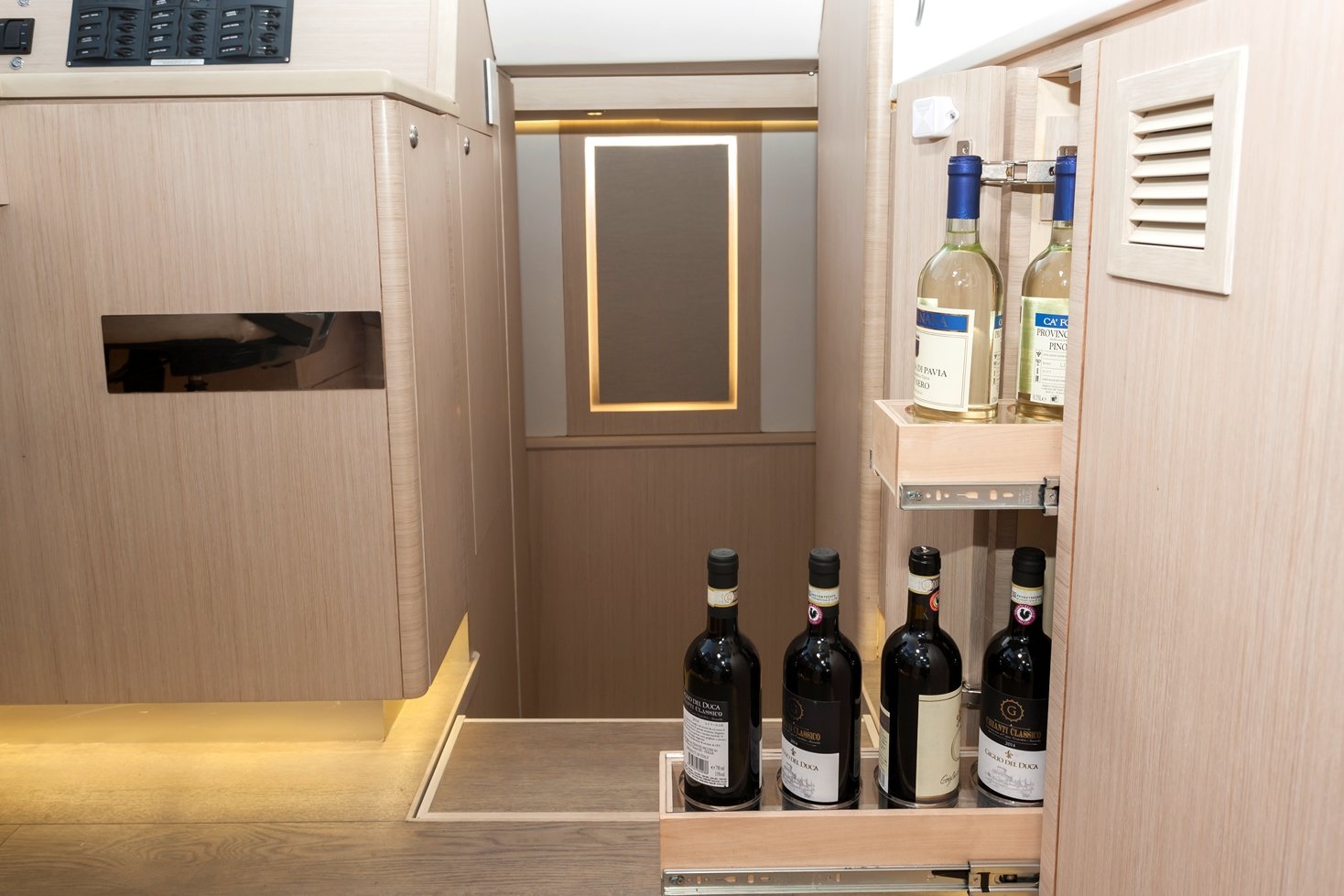For many years in general sailing, racing, cruising my own boats and working in the industry I never heard any discussion about the placement of the galley in a multihull, particularly in cats. Recently however the comment of ‘galley up is better because the cook is part of the conversation’ has been used with increasing frequency.
#2 – GALLEY UP IS GOOD BECAUSE THE COOK IS PART OF THE CONVERSATION
Like most truisms this one falls apart fairly quickly. However at the outset, let me say that I am not here to talk you out of galley up, just to ensure you understand the reasons underpinning these decisions and to make sure you don’t get blinded by the truism. Also it should be noted that there is a size point at which the question becomes less of an issue, roughly speaking that is around 15m, above that you have beam and volume to play with, below that less so, and below 14m increasingly less so.
A BIT OF HISTORY
Early multihulls tended to be slimmer sleeker and less voluminous in the saloon/bridgedeck area. Also early multihulls tended to be owner built and simplicity, performance and cost were the key drivers. Most early multihulls were also smaller than today’s crop of production boats. Initially the decision on placement was a combination of physics (the lower the galley the better) and cost and ease.
A few years back however as production cats started to infiltrate and later dominate the charter market, particularly the Caribbean charter market, a relatively simple driver saw a wholesale move to the galley up configuration. That driver was the amount of cabins with ensures that you could squeeze into a boat, the more you could, the better the rate of return on your capital investment. The actual reason for the galley up movement had nothing to do with the galley, it was all about maximising the amount of double with ensuite cabins. Like many things in life the marketing people then had to invent a way of selling the idea as a good thing, hence the cook/conversation concept started to appear.
Let’s look at some of the disadvantages of galley up in boats under 14m. Invariably the saloon has to be compromised, less space and more cramped layout. The galley itself also has to be compromised, less space, less counter space, less storage and cupboard space and less space for fridges, freezers and the like. In fact on many 12-13m cats I have sailed with galley up the most annoying part of the process is going up and down to pantries, for storage, pots and pans, not to mention the off putting and unsightly mess that is in the galley while you are having your meal. As for bench space, well there is likely to be little, so whilst the galley might claim to be ‘up’ in the sub 14m area, by and large only part of it is.
But let’s move on to the single biggest alleged benefit of galley up, that where the cook is part of the conversation. The reality is that on almost all cats sub 14m with galley up, the helm is pushed up. So the cook might be part of the conversation but the the helmsperson isn’t, I think that might be the wrong approach to me, surely the helm needs to be more involved than anyone else. Many if not most cruising cats are sailed by couples. The most popular galley up approach then results in a disconnect between the two people on board. Sure the boat may be on autopilot a lot, but when it matters you need to be on the helm and be able to communicate with the other person, be they in the galley or saloon.
A simple test of the effectiveness of the galley/helm relationship is this, can the person on the helm see the person in the galley and vice versa, can the person hand food/drink to the helm and vice versa without either of them having to climb stairs or move far? If not – its an inefficient and some might say, unsafe design approach. I have included a couple of photos of popular galley up cats, on neither can the helm and galley communicate and pass items to each other, and yet on some galley down designs you can. The first galley down photo shows the galley taken from the helm, clearly all parties can see and communicate with each other. The second galley down photo shows the helm position from which the photo was taken. So the question is, no matter where the galley is, can you see the helmsperson and communicate with, if not, why would you want that arrangement?
Like many myths on first glance it makes sense, dig a little deeper, not much substance to the idea, particularly on genuine cruising boats with a couple on board.
See more: Multihull Mythologies (part 1) >>




